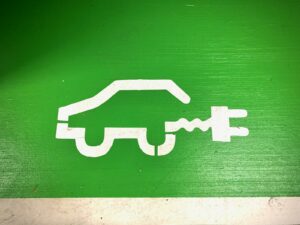As more and more drivers make the switch to electric vehicles (EVs), an increase in the number of electric car battery faults will inevitably follow. Despite claims that EVs do not fail, there is a growing body of evidence to the contrary, with failure rates roughly equivalent to those of internal combustion engine vehicles.
By Dr Sara Ridley – Engineering and Quality Director at Autocraft EV Solutions
Faced with this unexpected reality, many automakers must now meet their warranty obligations while avoiding escalating warranty costs and reputational damage. These concerns must also be reconciled with the need to transition to a greener future and tackle their impact on the environment.
Many industry commentators see recycling as the best route to circularity, however, this belief is often founded on a flawed understanding of the possibilities of EV battery repair. The environmental potential of EV is enormous, however, unlocking this potential requires a commitment to maximising battery longevity. It is therefore crucial to tackle some of the prevailing myths and misunderstandings around managing EV battery health if the EV revolution is to fulfil its promise.
It isn’t possible to repair EV battery repairs
With the right testing capability, it is possible to diagnose and tackle the root cause of faults at a modular level, as we at Autocraft EV Solutions have shown by carrying out thousands of successful EV battery repairs. In very simple terms, a pack will perform to the level of its worst performing module and when one underperforms, this can cause a significant drop in performance or, in extreme cases, total failure. By replacing problematic cells with healthy ones, this restores a pack to its highest performance state, meaning that a supposedly ‘failed’ EV pack is no longer a terminal issue.
To sustain this process, it is important to have access to a supply of replacement healthy modules. When we can identify which cells and modules with a failed pack are still functional, they can be incorporated into another pack to give it a new lease of life. This value is lost when battery packs containing healthy modules are prematurely recycled, underlining the need to squeeze every last bit of value from individual modules.
Recycling EV batteries is inherently more ‘circular’
A common misconception is that recycling faulty batteries is the ultimate solution for electric vehicle circularity.
While EV battery recycling has its place, it is better for the environment to take every possible measure to repair EV batteries in order to restore performance and maximise their longevity. This view is consistent with the concept of the hierarchy of waste, which advocates for preventing waste in the first instance before recycling even enters the discussion. Defaulting to recycling, without repairing and repurposing batteries within second-life applications, is sub-optimal from a sustainability perspective.
Ignoring the fact that a staggering portion of the materials recovered from EV batteries end up in non-automotive applications, including the very roads the vehicles drive on, producing a new replacement pack comes with a huge environmental cost and negates much of the environmental case for EV. By the same token, the environmental impact of the recycling is often overlooked whereas the amount of energy, carbon and water needed to carry out repairs is minimal, reinforcing the importance of repair within the process of EV circularity.
Batteries can’t be restored to brand new condition
It’s true that no EV battery can be restored to a brand-new condition. The first use triggers an irreversible chemical reaction, leading to natural degradation over time, known as calendar aging. However, remanufacturing can improve the battery pack’s condition.
Cyclical deterioration, caused by how the vehicle is driven and charged, is reversible, meaning that a battery can be returned to the highest possible level accounting for calendar aging. This ensures the battery meets the required performance level for the remainder of the warranty period or beyond, as repairs can be made multiple times throughout a battery’s life, halting premature decline and increasing longevity.
The EU Parliament’s first directive on electric vehicle batteries states that a remanufactured battery pack can be sold as a remanufactured product if the remanufacturing process restores the state of health to at least 90%. This directive underscores the environmental and commercial value of EV battery remanufacturing, preventing premature scrapping of battery packs.
EV batteries cannot be repaired safely
Until recently, repairing EV batteries was considered unfeasible and unsafe. The team at Autocraft EV Solutions recognised that this was completely unsustainable and developed the first ever fully industrialised process to allow for EV battery testing and repair to be carried out safely and at scale.
Through the use of augmented reality and advanced technologies such as LiDAR, our unique EV battery methodology ensures that every condition for an optimal repair is met, with each step of the process documented via cloud-based software to demonstrate absolute compliance with safety protocols and the designated repair process. This is significant on multiple levels.
The safety of technicians and their working conditions is paramount, and only the highest standards of safety can be accepted. Our system ensures this by triggering an immediate shutdown of the repair process until any non-compliance with safety protocols is resolved. This becomes even more important as repair volumes increase and technicians are under increased pressure to carry out repairs, leaving them vulnerable to hazards stemming from human error.
As the repair system guides employees step-by-step through the process, this contributes to a high quality repair process that is so crucial to eliminating the risk of repeat failure, thereby instilling confidence in EVs. Given the considerable upside of EV repair, the perceived safety risks should no longer be allowed to take precedence, particularly when solutions already exist.
The reality: EV health is the foundation of e-mobility
Electric vehicle battery repair is both a viable and sustainable option that the industry can no longer ignore.
There are many aspects to EV circularity and while recycling will always play an important role within this process, a mentality shift is needed. For electric vehicles to truly fulfil their environmental potential, it is imperative that we take every possible step to maximise the service life of each and every battery module before turning to recycling. With our world-class EV testing and repair capability, Autocraft EV Solutions can achieve precisely this, maximising the longevity of EV batteries in order to unlock their full value.
By challenging the misconceptions surrounding EV batteries this will allow the wider industry to take better informed decisions that ultimately benefit the planet.
For more information go to https://autocraftsg.com/solutions/ev-solutions/
















Leave a Reply